Soft Sourdough English Muffins
These sourdough English Muffins are super easy to make and taste amazing! Sourdough English muffins are little bread rounds, leavened with sourdough starter and cooked in a pan. They’re toasted on both sides to create a crisp outer but have a lovely soft texture inside.

If this is your first time making English muffins, you’re in for a treat! They are so tasty and easy! You can use these delicious English muffins to make sandwiches or eggs benedict, toast them and serve them with butter.
These classic English muffins have plenty of nooks and crannies for butter to hold on to. You don’t need any special English muffin rings for this recipe. I use a cookie cutter or a glass to cut out the dough rounds.
About this sourdough English muffin recipe
- An easy recipe to make. The dough doesn’t require any heavy kneading and is not very wet. A few sets of simple stretches and folds give the structure.
- You don’t need an oven! The English muffins are toasted in a frying pan or skillet, so there’s no need to heat the oven. I use a cast iron skillet which holds the heat really well.
- Flexible in timing. The dough undergoes a cold-proof to bring extra flavor. As with most sourdough recipes, the timings of the cold proof can be tweaked to fit around your schedule.
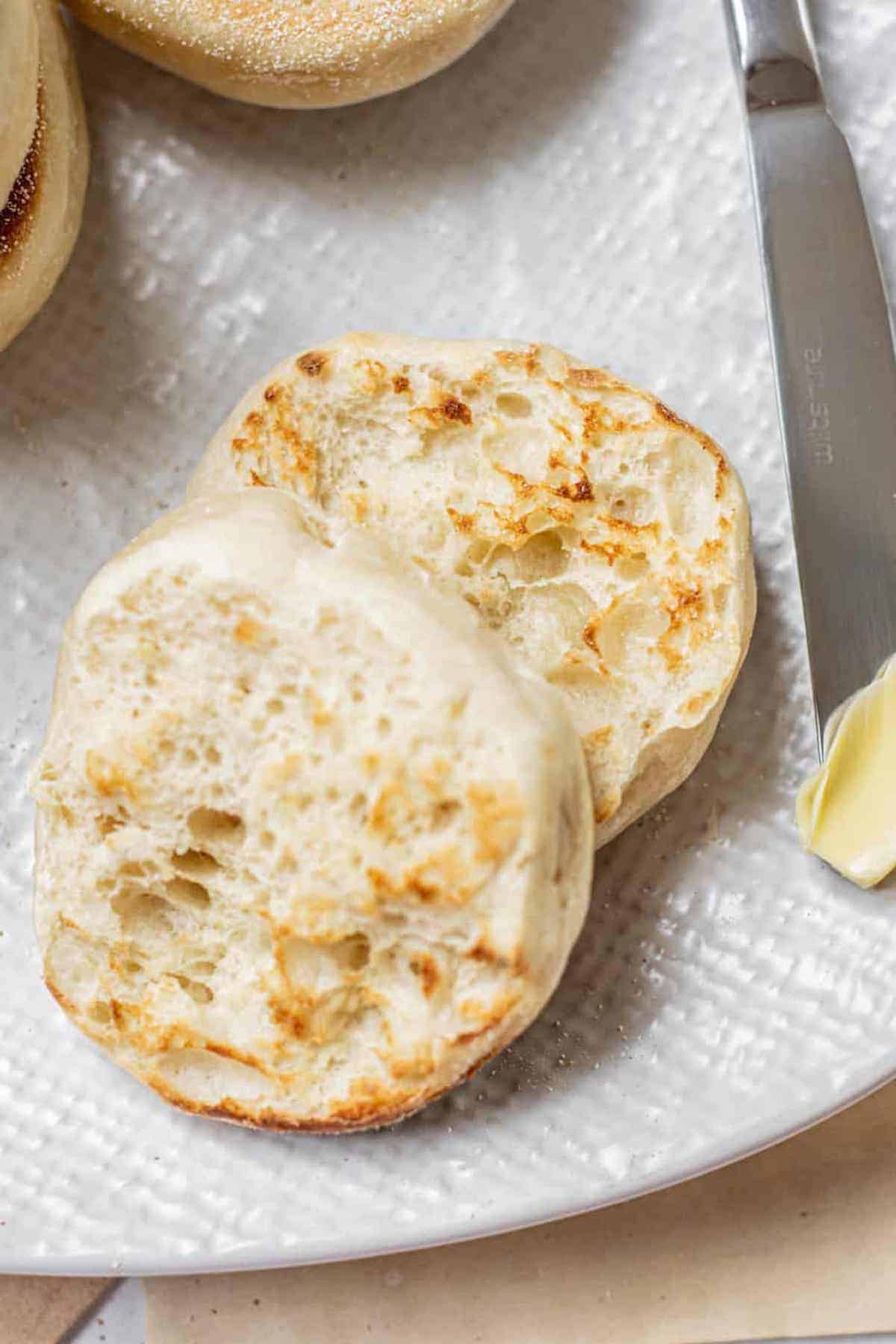
Ingredients
Most of the ingredients in this recipe are pantry staples. The only special ingredient needed for sourdough English muffins is semolina flour (or substitute this with a fine corn meal.) This gets dusted on the dough rounds and stops them from sticking. Find the ingredient amounts listed in the printable recipe card at the bottom of this post. Here is a rundown of what you will need:
- Whole milk
- Water
- Granulated sugar (this can be substituted with honey or maple syrup too)
- Butter ( this can be unsalted butter or salted)
- Salt
- Active sourdough starter – To make these homemade English muffins you need an active starter since they are made without commercial yeast.
- All-purpose flour
- Semolina flour or fine cornmeal for dusting.
Equipment
- Cast-iron skillet or nonstick pan
- Use a cookie cutter or glass to cut the muffins, around 3 inches in diameter.
Baker’s schedule
Here is an example baker’s schedule for these homemade sourdough English muffins. These timings can be changed a bit to suit your own schedule.
- 9 am – Feed your sourdough starter.
- 3 pm – Mix the English muffin dough.
- 3:20 pm – 7:20 pm. Place the dough in a warm spot. Let it rise until it puffs out by around 40%. During the first hour, perform 3 sets of stretches and folds.
- 7:20 pm – the next day. Cover the dough and place it in the refrigerator overnight (or for up to 2 days).
- 9 am – 10 am. The next morning, roll and cut the dough into rounds. Let them puff out a bit at room temperature for an hour.
- 10 am. Cook the sourdough English muffins.
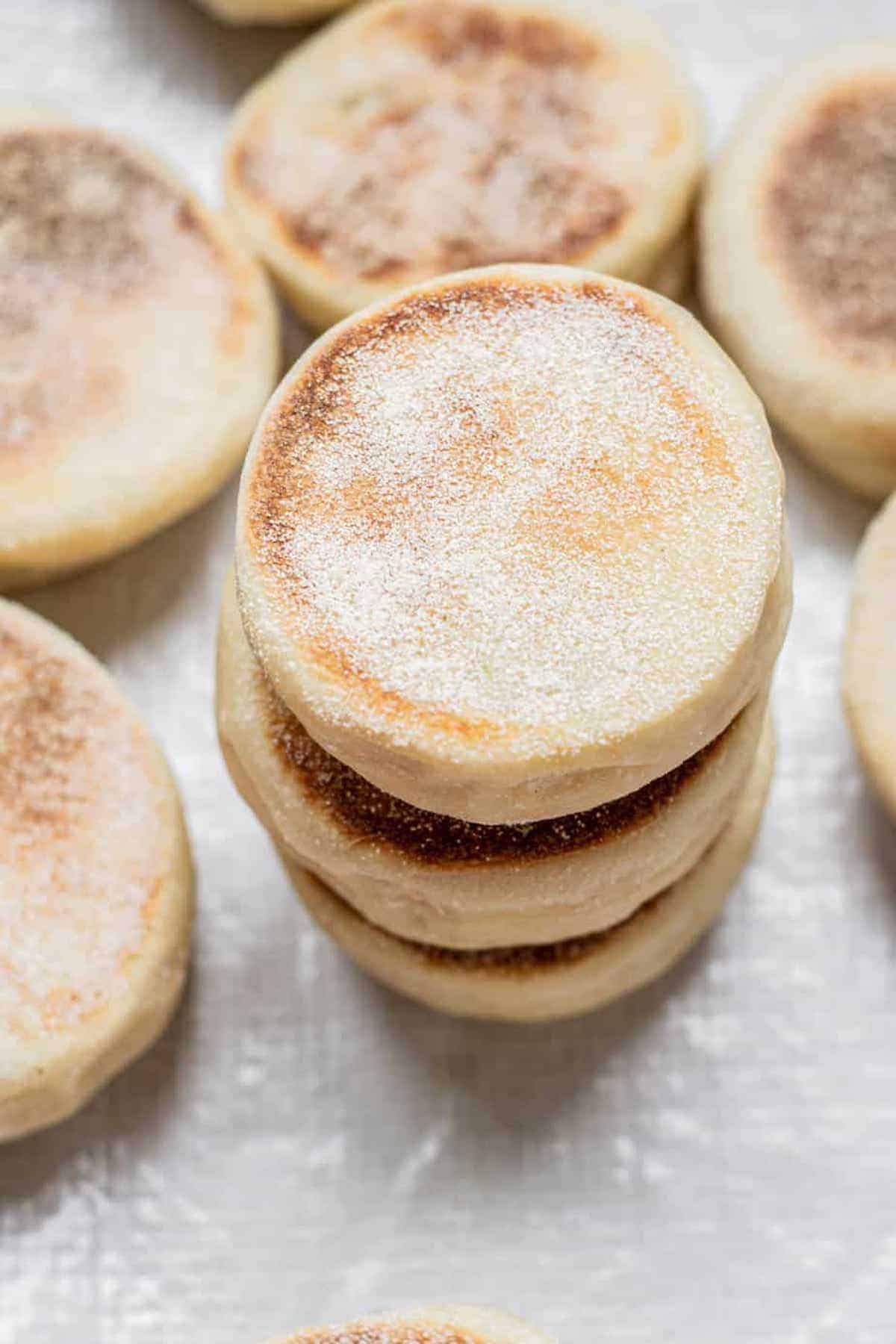
How to Make Sourdough English Muffins
In the morning, feed your sourdough starter. In a bowl, mix all the starter ingredients until well combined. Scoop the mixture into a clean jar cover it with a loose lid, and leave it in a warm place to double.
The dough
When the starter has doubled, begin the dough.
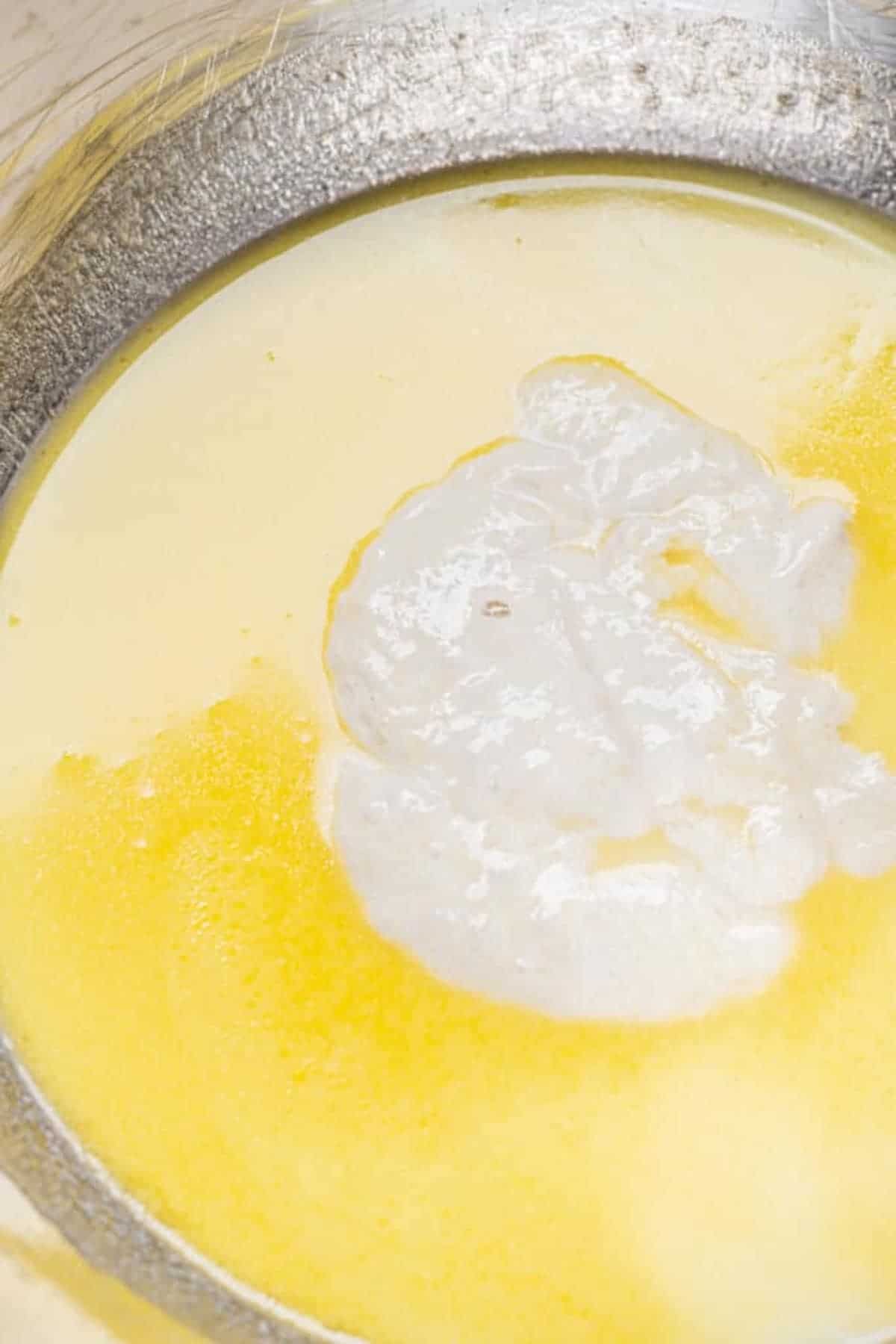
Add the butter and water to a small saucepan and warm it up until the butter has melted. Pour it into a large mixing bowl and add in the cold milk.
This will bring the temperature of the water down to make it lukewarm.
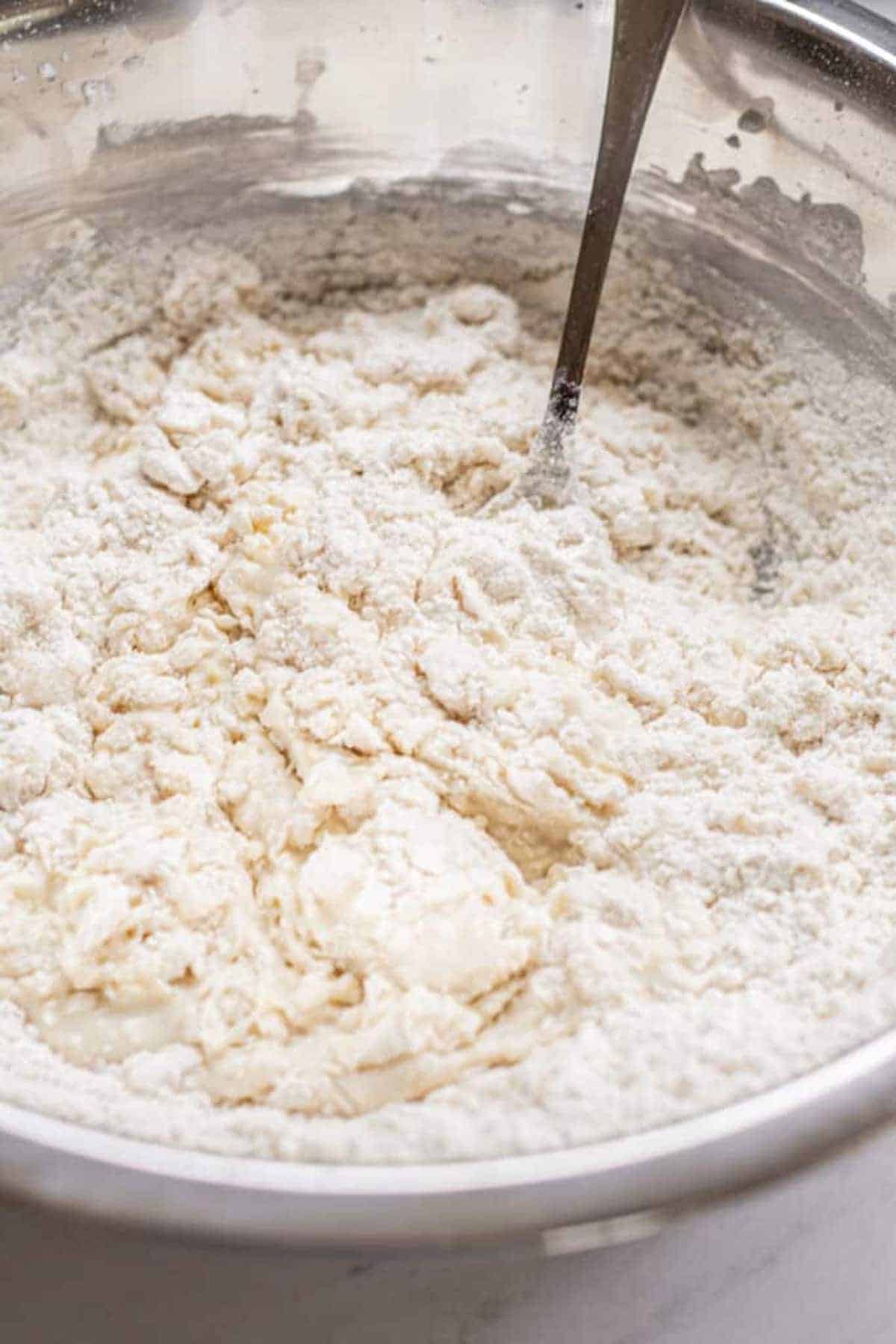
Add flour and salt, and use a fork to bring the dough together.

Switch to using your hands and push the dough into a shaggy and sticky dough ball.
It won’t be smooth yet, but ensure everything is well combined.

Place the dough ball in a clean large bowl, give it a stretch, and fold. Cover the bowl with a damp tea towel or plastic wrap and place it in a warm place.
Over the next hour, give the dough another 3 sets of stretch and folds, spaced around 20 minutes apart.
Stretch and folds
A stretch and fold method is when one side of the dough is stretched and pulled over. The bowl is then turned a quarter turn, repeated on the following side.
Continue stretching, folding, and turning the bowl until all sides have been folded.
Bulk Fermentation
After the hour, let the dough continue the bulk fermentation and have it’s first rise in the warm spot for another 3-4 hours, ideally around 77°F/25°C) until puffed out by around 40%.
If you have a cold kitchen, create a warm and humid spot by placing the dough into a turned-off oven alongside a bowl of boiled water. Replace the water as needed when it cools down.
Cold-proof
At the end of bulk fermentation, cover the bowl and place it in the fridge overnight or for up to 2 days.
Shaping
Take the cold dough from the refrigerator and pull it from the bowl onto a lightly floured work surface. Shape the dough into a smooth ball and let it sit at room temperature for around 10 minutes to relax.
Use a rolling pin or your fingers to push the dough into a 2 cm (just under 1 inch) round.
Take a piece of parchment paper and generously dust it with semolina flour.
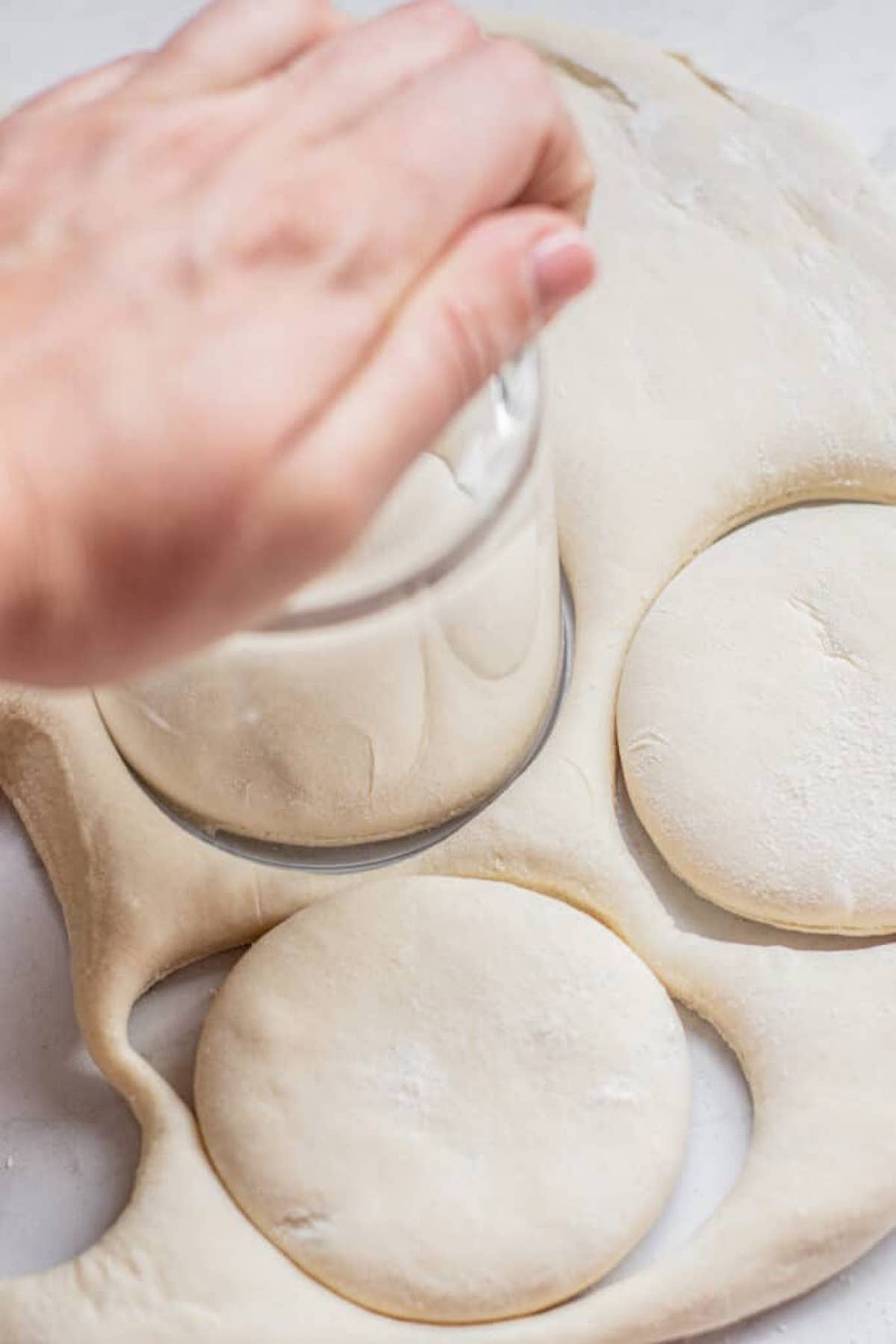
With a glass or biscuit cutter that measures around 7.6 cm / 3 inches in diameter.
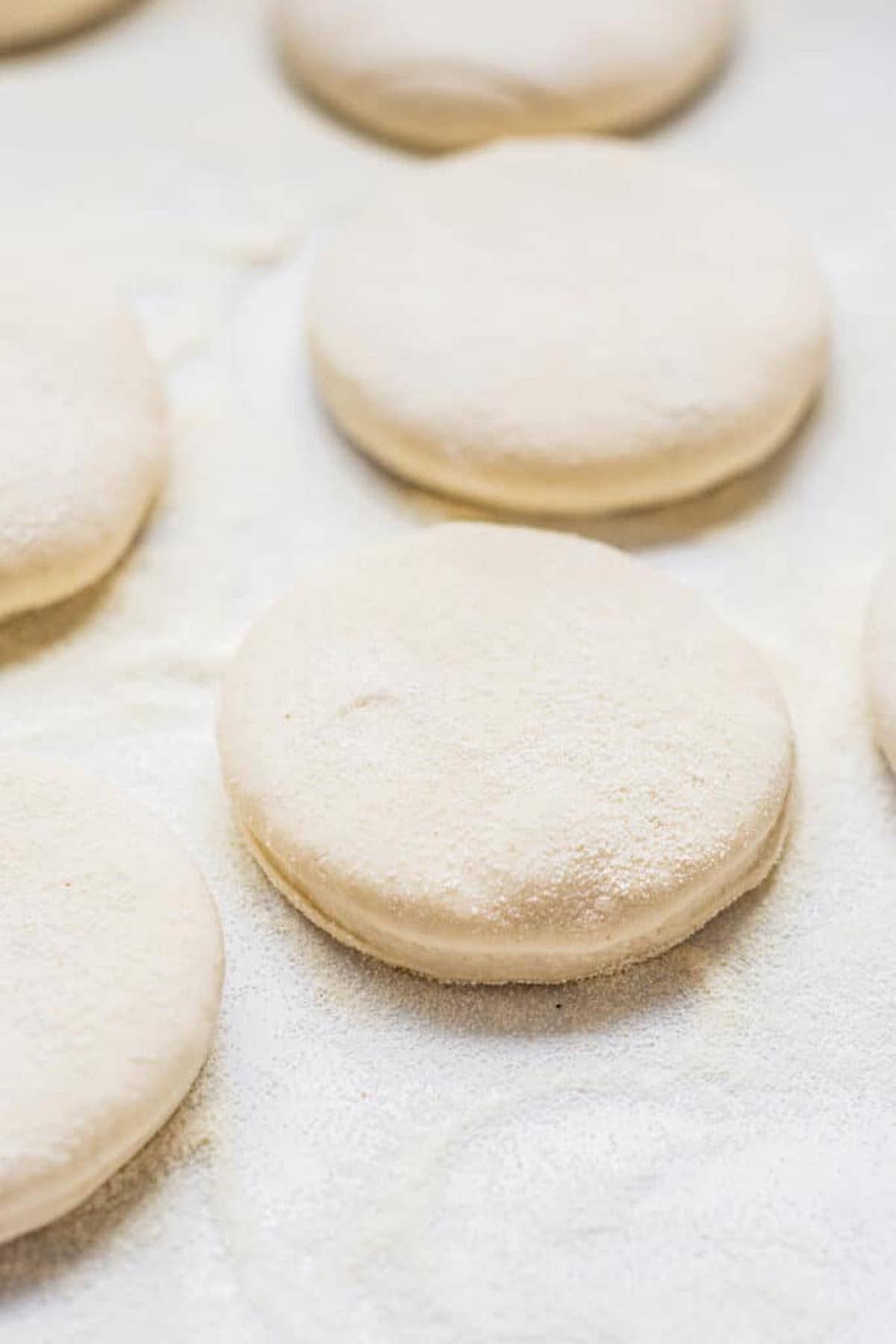
Place them on the parchment paper. Sprinkle the top of the dough circles with more semolina flour.
Any scraps of dough can be gathered up and rolled again. You might need to let the dough rest and relax before rolling it out so it doesn’t spring back too much.
Second rise
For the final rise, let the dough rounds sit at room temperature for around an hour to puff. At the end of the rising time, preheat a cast iron pan or nonstick skillet over low-medium heat.
Cooking
Place 4 muffins in the pan and cook for 6-7 minutes on one side. Flip the muffins and cook for 6 minutes on the other side. You may need to play around with the temperature of your stovetop to get it right.
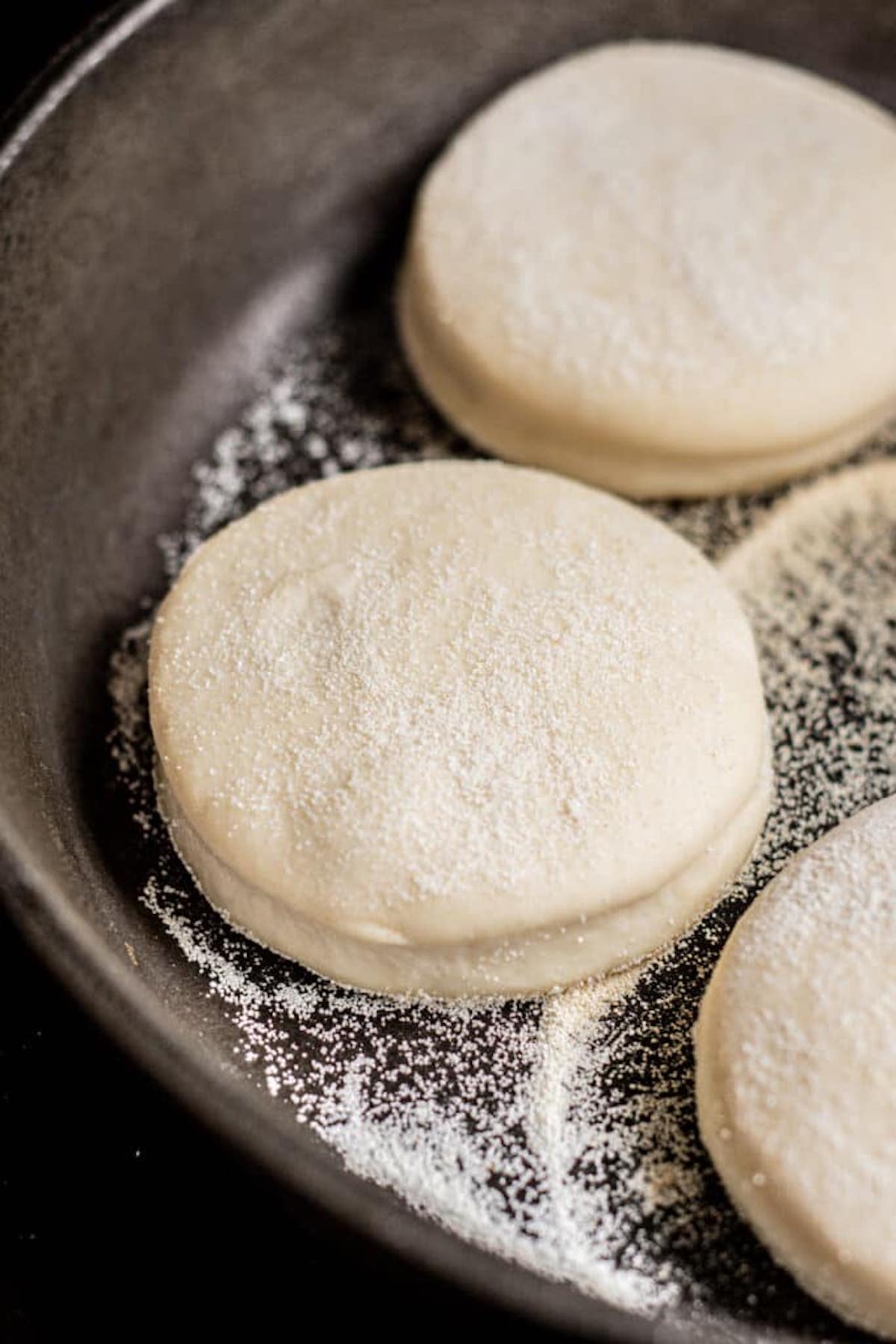
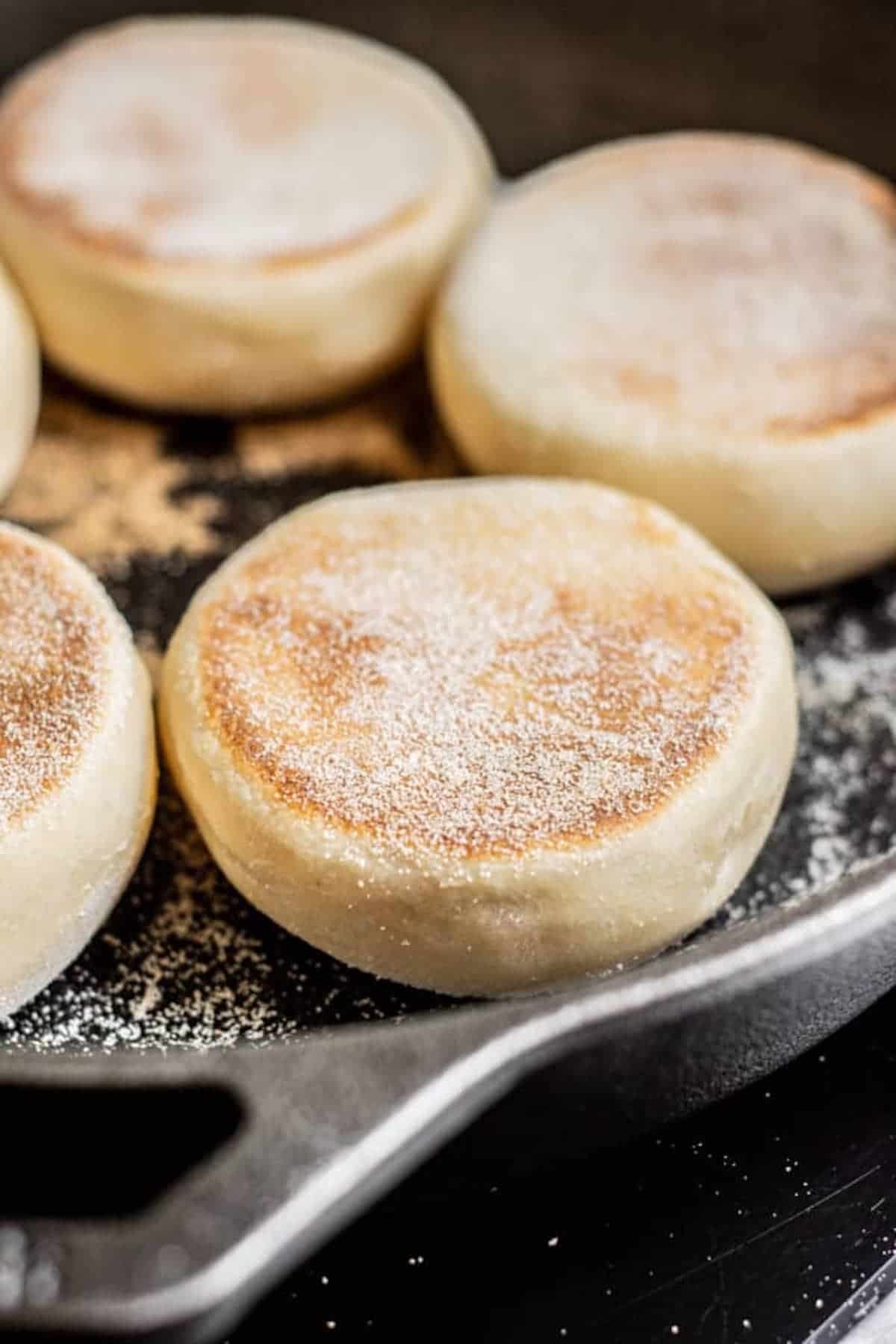
If medium-low is too hot, turn it down to low heat. It should be hot enough to create a deep golden brown toasted exterior but not too hot to burn. If you have a instant read thermometer, the internal temperatures of the muffins should read 200°F/94°C.
Place the cooked muffins on a wire rack to cool while you cook the remaining muffins. Dust away semolina flour from the pan before adding the next batch, or it will burn.
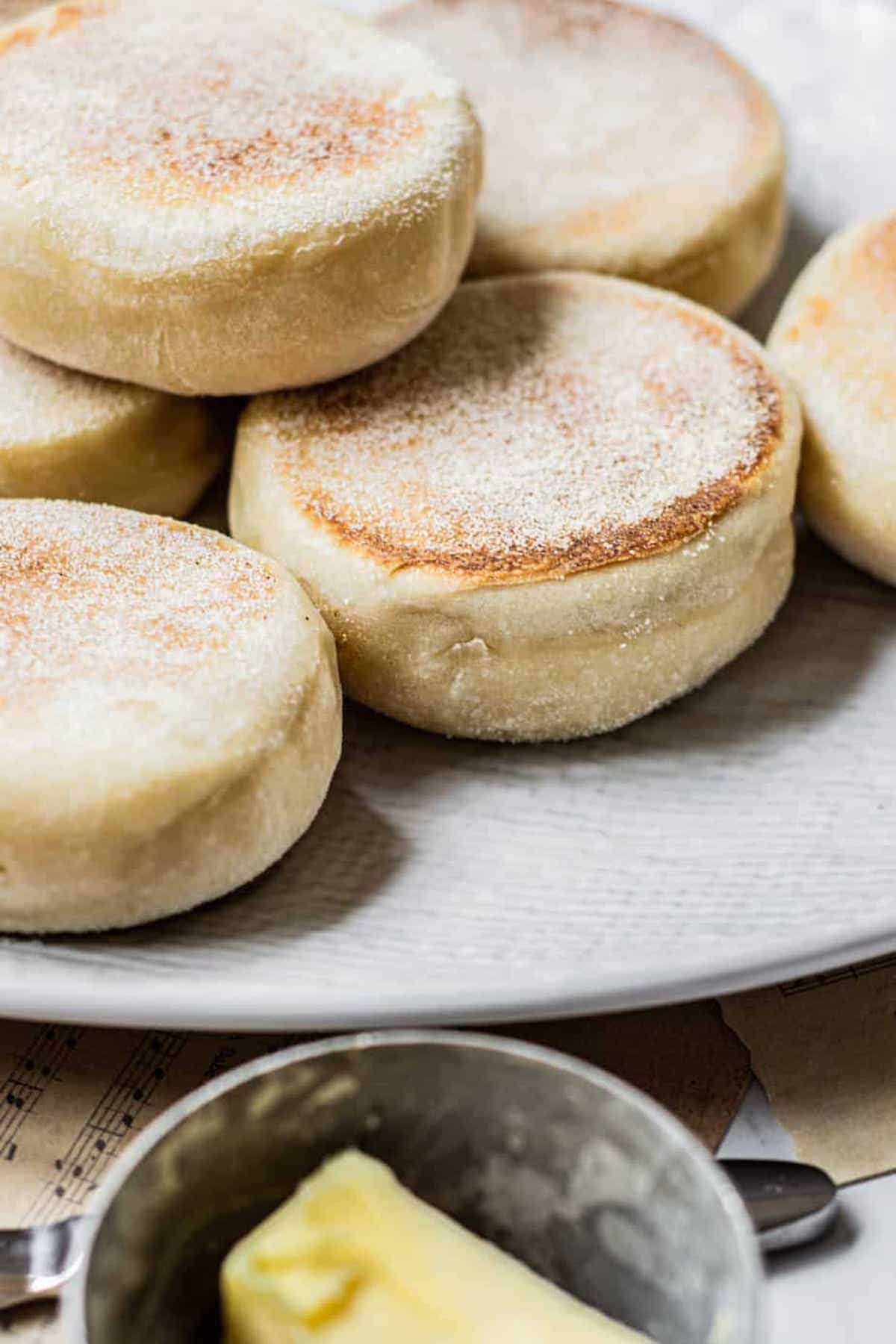
Serving and storing
Fresh English muffins can be served as they are, with your favorite toppings and fillings, or they can be toasted. Traditionally, an English muffin is not cut in half, it is ripped in half.
This creates all these ridges and nooks for fillings like butter to cling to.
Leftover muffins can be stored in an airtight container for up to 4 days. They can also be frozen for up to 3 months.
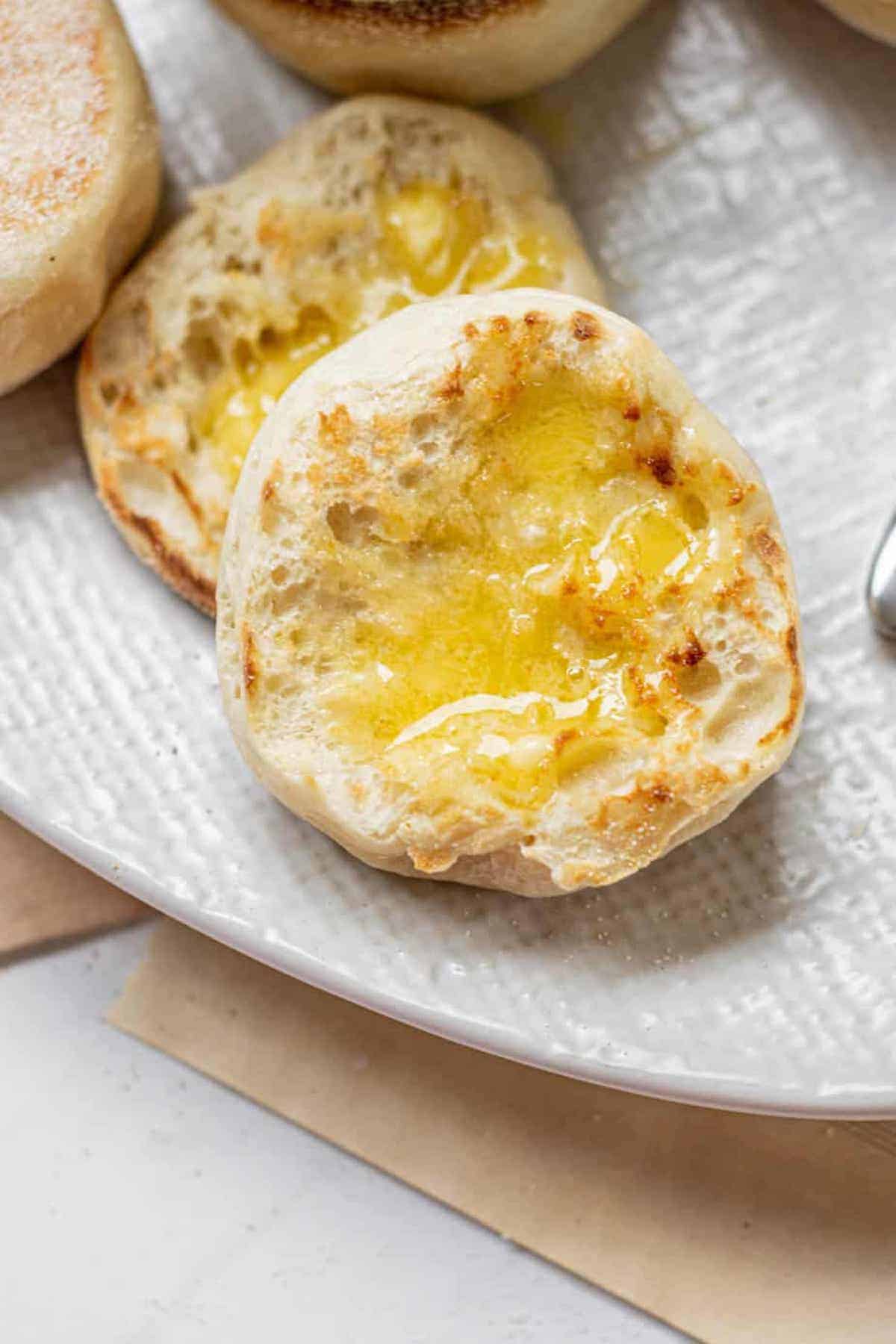
Related recipes
If you love sourdough, you might love these recipes too!
- The Best Sourdough Brioche Bread
- The Best Sourdough Cinnamon Raisin Bread
- Step-by-Step Sourdough Baguette Recipe
- Multigrain Sourdough Bread
- Sourdough Fruit Bread
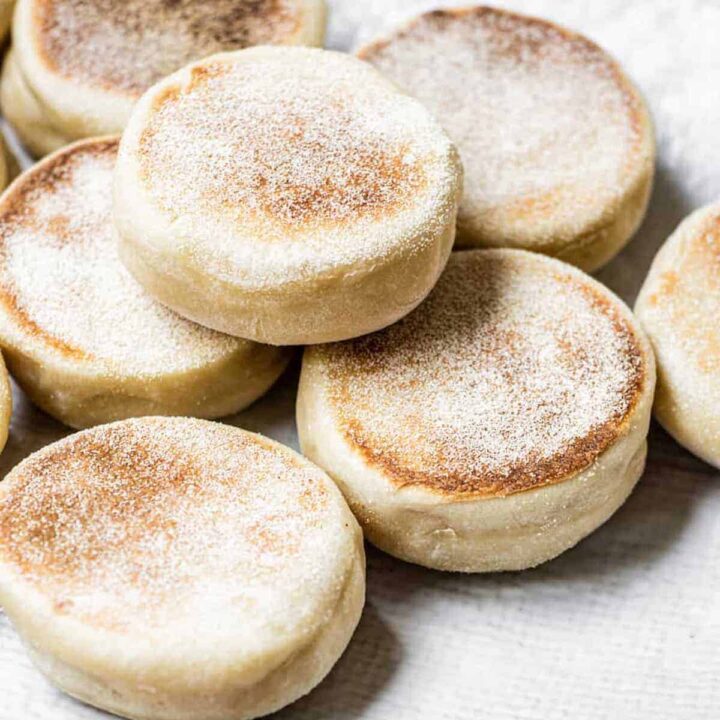
Sourdough English Muffins
These sourdough English muffins are super easy to make and they taste amazing!
Ingredients
Sourdough starter
- 25g sourdough starter
- 50g all-purpose flour
- 50g water
Dough
- 120g water
- 30g unsalted butter
- 120g cold milk
- All the sourdough starter
- 20g granulated sugar
- 375g all-purpose flour
- 5g salt
- Semolina flour for dusting
Instructions
The starter
- In the morning feed your sourdough starter. In a bowl, mix all the starter ingredients until well combined. Scoop the mixture into a clean jar and cover it with a loose lid. Leave it in a warm place to double.
The dough
- When the starter has doubled, begin the dough. Add the butter and water in a small saucepan and warm it up until the butter has melted.
- Pour it into a large mixing bowl and add the cold milk. This will bring the temperature of the water down to make it lukewarm.
- Add the sourdough starter and sugar and give it a whisk with a fork to combine it. The starter won't combine properly yet.
- Add the flour and salt and use a fork to combine them. Switch to using your hands and push the dough into a shaggy and sticky dough ball. It won't be smooth yet, but ensure everything is well combined.
- Place the dough ball in a clean, large bowl and give it a stretch and fold. Cover the bowl with a damp tea towel or plastic wrap and place it in a warm place. Over the next hour, give the dough another 3 sets of stretch and folds, spaced around 20 minutes apart.
Stretch and folds
- A stretch and fold method is when one side of the dough is stretched and pulled over. The bowl is then turned a quarter turn, repeated on the following side. Continue stretching, folding, and turning the bowl until all sides have been folded.
First rise
- After the hour, let the dough rise in the warm spot for another 3-4 hours, ideally around 77°F/25°C) until puffed out by around 40%. If you have a cold kitchen, create a warm and humid spot by placing the dough into a turned-off oven alongside a bowl of boiled water. Replace the water as needed when it cools down.
Cold-proof
- Once risen, cover the bowl and place it in the fridge overnight or for up to 2 days.
Shaping
- Take the cold dough from the refrigerator and pull it from the bowl onto a lightly floured surface. Shape the dough into a smooth ball and let it sit at room temperature for around 10 minutes to relax.
- Use a rolling pin or your fingers to push the dough into a 2cm (just under 1 inch) round. Take a piece of parchment paper and generously dust it with semolina flour.
- Cut out dough circles and place them on the parchment paper With a glass or biscuit cutter that measures around 7.6 cm/3 inches in diameter. Sprinkle the top of the dough circles with more semolina flour.
- Any scraps of dough can be gathered up and rolled again. Let the dough rest and relax first before rolling it out so it doesn't spring back too much.
Second rise
- Let the dough rounds sit at room temperature for around an hour to puff. At the end of the rising time, preheat a cast iron pan or nonstick skillet over low-medium heat.
Cooking
- Place 4 muffins in the pan and cook for 6-7 minutes on one side. Flip the muffins and cook for 6 minutes on the other side. You may need to play around with the temperature of your stovetop to get it right. If medium-low is too hot, turn it down to low heat. It should be hot enough to create a deep golden brown toasted exterior but not too hot to burn. If you have a thermometer, the internal temperatures of the muffins should read 200°F/94°C.
- Place the cooked muffins on a wire rack to cool while you cook the remaining muffins. Dust away semolina flour from the pan before adding the next batch, or it will burn.
Nutrition Information:
Yield: 10 Serving Size: 1Amount Per Serving: Calories: 298Total Fat: 4gSaturated Fat: 2gTrans Fat: 0gUnsaturated Fat: 1gCholesterol: 7mgSodium: 202mgCarbohydrates: 57gFiber: 3gSugar: 3gProtein: 9g




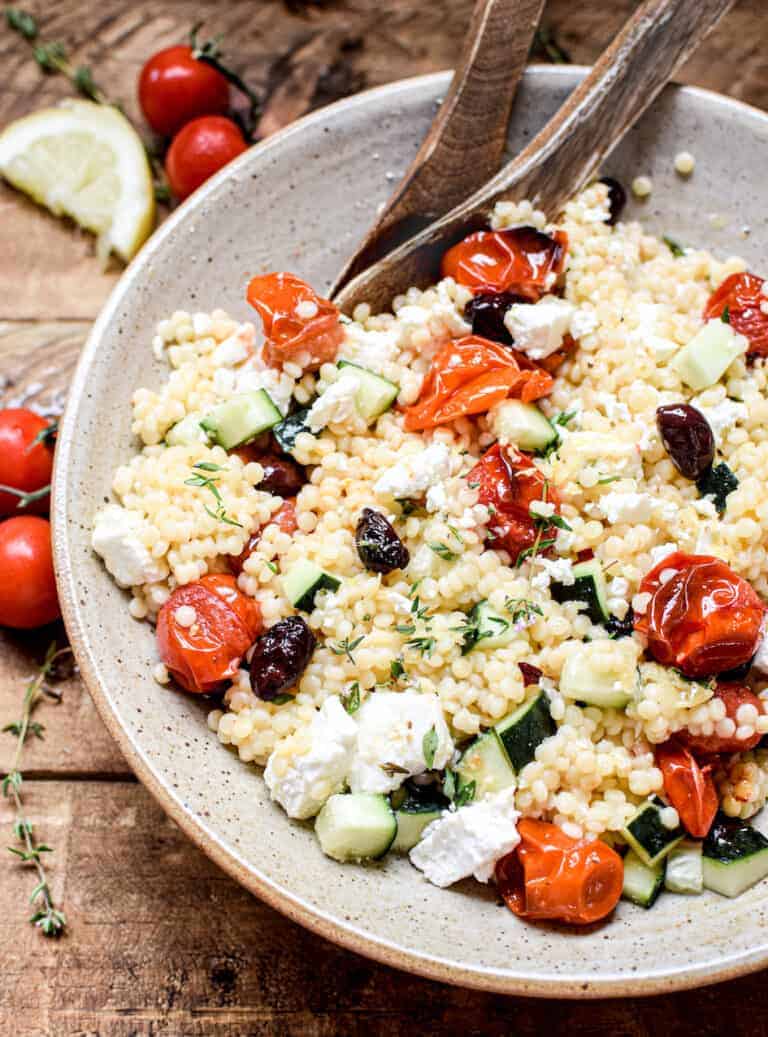
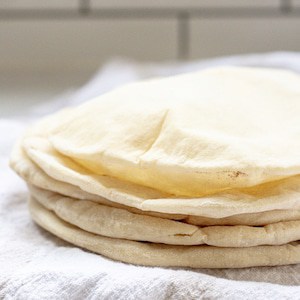
Hi Elien,
Just wanted to say thank you, this is the 3rd recipe from your sourdough ones I tried and I am very pleased with them.
I am just finishing cooking these muffins and I really liked the dough.
Thank you, Alice! I’m so pleased you’re enjoying the recipes
Have made these for the first time today… and will have to say they are the most delicious amazing English muffins I’ve ever had…. will never be buying shop bought ever again!!
Ah yay thank you Lucy! That makes me so happy to read that!
Do I have to add oil to the pan when cooking the english muffin?
No it’s a dry pan 🙂
Hello,
Simple question. You use all-purpose flour in your recipe, why not bread flour?
Hey Jan, an all-purpose flour (with a protein level of around 11%) brings enough protein to efficiently work the dough, but it keeps it soft too without getting too chewy 🙂
Can I use AP flour instead of semolina flour?
Yup 🙂
Hi. I already have some starter ready. How much starter do you use in grams?
Around 100g 🙂
Would almond milk work instead of milk?
I’ve not tried it but I don’t see why not! 🙂
Yep! I’ve only used almond milk with this recipe and they always turn out great.